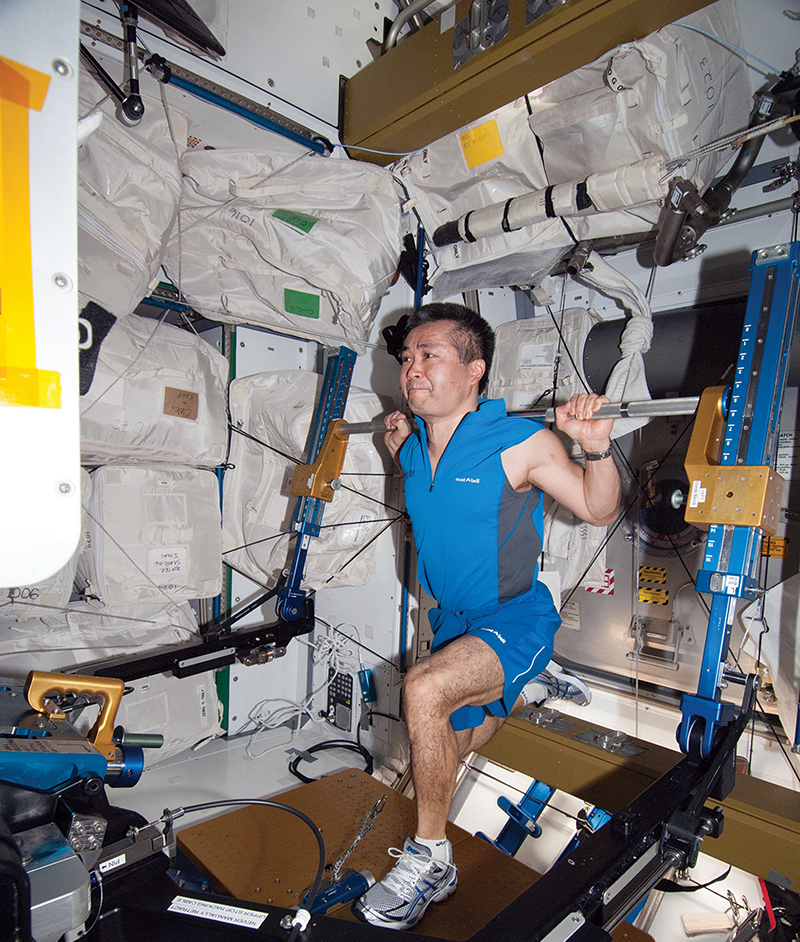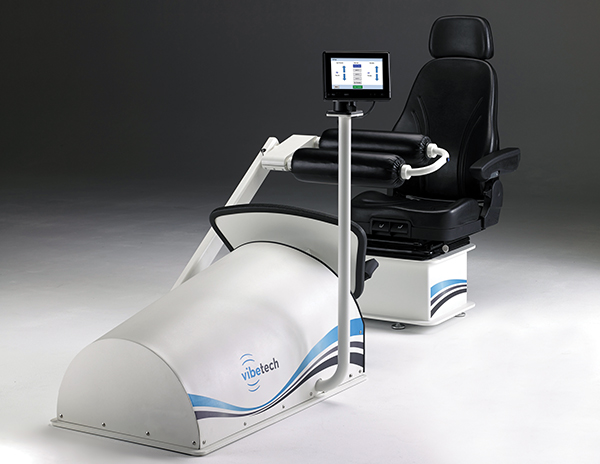
Space Grant Research Launches Rehabilitation Chair
NASA Technology
A stay on the International Space Station is no vacation. During a visit to the orbiting National Laboratory, astronauts divide their time among a variety of tasks. For one, they look after a multitude of space-based science experiments. For another, they clean and check the station’s equipment—inside and out. They also spend a significant amount of time doing something you might not expect: exercising.
In microgravity, astronauts’ bodies do not have to work like they do on Earth to move and accomplish normal daily tasks. Without the force of gravity acting on their bodies every moment of the day, astronauts’ bones lose density in space at a rate 10 times faster than those who suffer from osteoporosis. To stay healthy and keep their bones strong, astronauts spend a considerable amount of time working out while in orbit.
Technology Transfer
In 2000, a biomedical engineering student at Michigan Technological University, Jeff Leismer, became particularly interested in this issue of bone loss in microgravity. He was taking a class called Aerospace Physiology and Bone Remodeling, taught by Dr. William Harold Cooke.
“The skeleton loses about 1 percent of bone mass per month in space,” says Cooke, now in the Department of Health and Kinesiology at the University of Texas at San Antonio. “At Michigan Tech, we had an idea to develop something to simulate impact to the body so the bone wouldn’t decrease as much in space.”
Leismer says he began looking closely at mechanical vibration as a possible solution. At the time, a study had found that vibration could stimulate bone growth in animals. The researchers suggested that vibration fooled the bones into thinking they were working hard, resulting in the retention and growth of bone.
“How then, do we apply vibration to the weight-bearing components of the human body, which are the ones most affected by bone disuse atrophy?” asked Leismer.
To begin answering his question, Leismer began his graduate thesis research, with Cooke serving as advisor. Cooke had received funding from the Michigan Space Grant Consortium, part of the National Space Grant College and Fellowship Program, which was implemented by NASA in 1989 to fund research, education, and public service projects through a network of university-based Space Grant consortia.
Working with Space Grant funding under Cooke’s purview, Leismer built a prototype vibration-based system that could apply compressive loads from the heel to knee, heel to the waist, and heel to the shoulders to strengthen bone, just like a weight-bearing exercise would.
When it came time to test the system, Leismer decided to try it out. After about 10 minutes on the device, he attempted to stand, but nearly fell down. “It felt like I did about 1,000 leg presses. I realized then that it wasn’t just affecting bone; it was affecting muscle as well. That was my ‘Ah-ha’ moment, and I knew I’d better apply for a patent,” he says. “The technology was something much bigger than I’d thought it was going to be.”
From Michigan Tech, Leismer went to the University of Florida to work with other bone researchers and to make sure his treatment device wasn’t going to create any safety concerns. After completing his doctoral work, he received funding from the National Institutes of Health and, three years later, started selling the device.
“The work under Cooke was the inspiration for this product,” says Leismer, now the founder and chief technology officer of Sheboygan, Wisconsin-based VibeTech. “I started this over 10 years ago, and now we are making it a commercial product.”
Benefits
Named VibeTech One, Leismer’s rehabilitation chair uses a biomimetic approach to therapy, meaning it uses human-made means to mimic something that happens naturally. In this case, the chair uses vibration to simulate load-bearing exercise, which elicits muscle contractions in the body. The body then responds in a manner similar to the way it would respond to weight-bearing physical activity, and the bones and muscles are strengthened.
According to the company, the treatment has two parts: partial bodyweight loading and muscle vibration. The adjustable partial bodyweight loading simulates forces acting on the legs during standing and walking while also preparing the legs for the muscle vibration, which is recommended for up to 10 minutes at a time, three to five times a week.
One of the main advantages of the VibeTech One is that it does not require any physical exertion. As a rehabilitation chair, it can be used by people who have little or no physical strength or function from their heels to their lower back. They can simply sit and relax as the therapy takes place.
“We are providing treatment to put the mechanical signals into the body that it needs to stay strong—even during a period of inactivity. It’s for anyone suffering from disuse atrophy and functional decline due to age, disability, illness, injury, or surgery,” says Leismer. “In a rehabilitation environment, our goal is to get people up and out of wheelchairs and walking independently.”
After a patient becomes strong enough, a setting on the device can be adjusted to require more effort from the patient. “You can choose anywhere from 0 to 100 percent effort from the user. They can do leg presses against the machine if they want, or the device itself can provide all of the work,” says Leismer.
The first commercial application of the technology will be in the rehabilitation department of a skilled nursing facility. Another place where the product will likely find beneficial applications, however, is sports medicine, where the chair can be used to reduce muscle atrophy while keeping the joints limber after an injury or surgery. Already, a prototype in a hospital has shown success in treating patients with ankle sprains, hamstring sprains, and pelvic fractures. Anecdotal evidence reports that the technology has provided the added benefit of reducing pain for these patients as well.
Currently designed for the lower extremities, the device could potentially be used on any part of the body, explains Leismer. “Our treatment provides dynamic motion in a form that replicates natural biomechanical signaling in the body. Although we haven’t tested all of these areas yet, we fully anticipate that they will be positively influenced by treatment.”
With high hopes for the future, Leismer suggests the technology could be a new solution for getting people to exercise. “Exercise is the number-one thing you should do, but patients don’t do it because of barriers including exertion, pain, and flexibility,” he says. “I am hoping this will help people lead a much higher quality of life—and hopefully live longer as well.”

The VibeTech One rehabilitation chair can be used by people who have little or no physical strength or function in their lower body. Users can sit and relax as the therapy progresses.

Japan Aerospace Exploration Agency astronaut Koichi Wakata, Expedition 38 flight engineer, gets a workout on the advanced Resistive Exercise Device in the Tranquility node of the International Space Station. Intense exercise regimens are a necessary part of life in microgravity to maintain bone and muscle mass.













